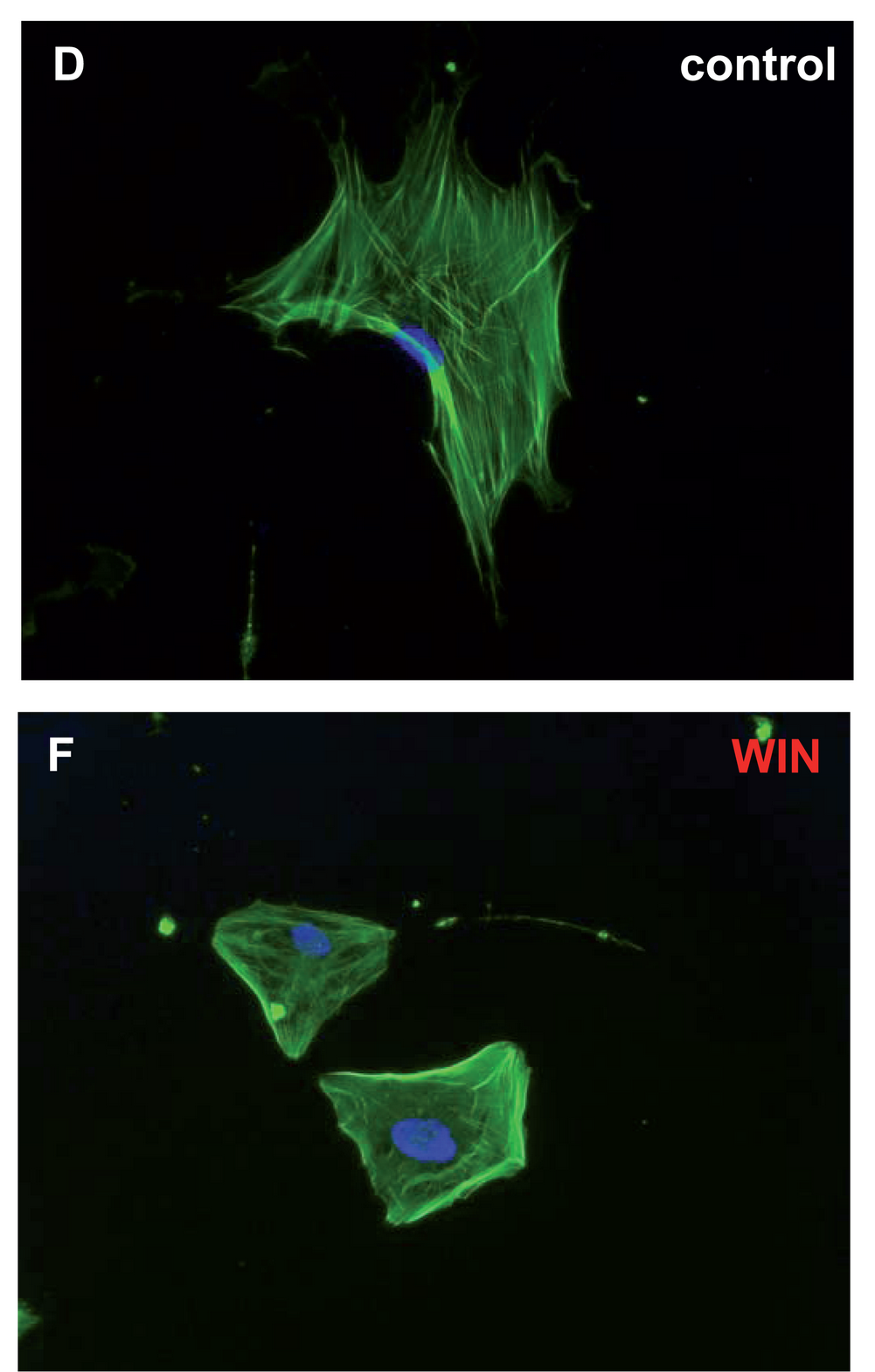WIN 55,212-2 on:
[Wikipedia]
[Google]
[Amazon]
 WIN 55,212-2 is a chemical described as an
WIN 55,212-2 is a chemical described as an
 WIN 55,212-2 is a chemical described as an
WIN 55,212-2 is a chemical described as an aminoalkylindole Aminoalkylindoles (AAIs) are a family of cannabinergic compound that act as a cannabinoid receptor agonist. They were synthesized by the pharmaceutical company Sterling-Winthrop in the early 1990s with a commercial potential as a new family of n ...
derivative, which produces effects similar to those of cannabinoid
Cannabinoids () are several structural classes of compounds found primarily in the ''Cannabis'' plant or as synthetic compounds. The most notable cannabinoid is the phytocannabinoid tetrahydrocannabinol (THC) (delta-9-THC), the primary psychoact ...
s such as tetrahydrocannabinol
Tetrahydrocannabinol (THC) is a cannabinoid found in cannabis. It is the principal psychoactive constituent of ''Cannabis'' and one of at least 113 total cannabinoids identified on the plant. Although the chemical formula for THC (C21H30O2) de ...
(THC) but has an entirely different chemical structure
A chemical structure of a molecule is a spatial arrangement of its atoms and their chemical bonds. Its determination includes a chemist's specifying the molecular geometry and, when feasible and necessary, the electronic structure of the target m ...
.
WIN 55,212-2 is a potent cannabinoid receptor agonist
An agonist is a chemical that activates a receptor to produce a biological response. Receptors are cellular proteins whose activation causes the cell to modify what it is currently doing. In contrast, an antagonist blocks the action of the agon ...
that has been found to be a potent analgesic in a rat model of neuropathic pain. It activates p42 and p44 MAP kinase via receptor-mediated signaling.
At 5 μM WIN 55,212-2 inhibits ATP production in sperm
Sperm (: sperm or sperms) is the male reproductive Cell (biology), cell, or gamete, in anisogamous forms of sexual reproduction (forms in which there is a larger, female reproductive cell and a smaller, male one). Animals produce motile sperm ...
in a CB1 receptor-dependent fashion.
WIN 55,212-2, along with HU-210 and JWH-133, may prevent the inflammation caused by amyloid beta
Amyloid beta (Aβ, Abeta or beta-amyloid) denotes peptides of 36–43 amino acids that are the main component of the amyloid plaques found in the brains of people with Alzheimer's disease. The peptides derive from the amyloid-beta precursor prot ...
proteins involved in Alzheimer's disease
Alzheimer's disease (AD) is a neurodegenerative disease and the cause of 60–70% of cases of dementia. The most common early symptom is difficulty in remembering recent events. As the disease advances, symptoms can include problems wit ...
, in addition to preventing cognitive impairment and loss of neuronal markers. This anti-inflammatory action is induced through agonist action at cannabinoid receptors, which prevents microglia
Microglia are a type of glia, glial cell located throughout the brain and spinal cord of the central nervous system (CNS). Microglia account for about around 5–10% of cells found within the brain. As the resident macrophage cells, they act as t ...
l activation that elicits the inflammation.
WIN 55,212-2 is a full agonist at the CB1 cannabinoid receptor ( ''K''i = 1.9 nM) and has much higher affinity than THC (''K''i = 41 nM) for this receptor. WIN 55,212-2 is also an agonist of the PPARα and PPARγ nuclear receptors.
WIN 55,212-2 reduces voluntary wheel running in laboratory mice, but with effects that depend on both genetic background and sex.
In the United States, all CB1 receptor agonists of the 3-(1-naphthoyl)indole class such as WIN 55,212-2 are Schedule I Controlled Substance
The Controlled Substances Act (CSA) is the statute establishing federal U.S. drug policy under which the manufacture, importation, possession, use, and distribution of certain substances is regulated. It was passed by the 91st United State ...
s. WIN 55,212-2 is illegal in the UK.
WIN 55,212-2 is also a CB2 receptor
The cannabinoid receptor 2 (CB2), is a G protein-coupled receptor from the cannabinoid receptor family that in humans is encoded by the ''CNR2'' gene. It is closely related to the cannabinoid receptor 1 (CB1), which is largely responsible for ...
agonist and thereby, like other cannabinoid CB2 agonists, found to significantly improve cardiac
The heart is a muscular organ found in humans and other animals. This organ pumps blood through the blood vessels. The heart and blood vessels together make the circulatory system. The pumped blood carries oxygen and nutrients to the tissu ...
recovery after ischaemia
Ischemia or ischaemia is a restriction in blood supply to any tissue, muscle group, or organ of the body, causing a shortage of oxygen that is needed for cellular metabolism (to keep tissue alive). Ischemia is generally caused by problems ...
/ reperfusion (I/R) in the hearts of diabetic
Diabetes mellitus, commonly known as diabetes, is a group of common endocrine diseases characterized by sustained high blood sugar levels. Diabetes is due to either the pancreas not producing enough of the hormone insulin, or the cells of th ...
fatty rats, by restoring coronary perfusion pressure and heart rate
Heart rate is the frequency of the cardiac cycle, heartbeat measured by the number of contractions of the heart per minute (''beats per minute'', or bpm). The heart rate varies according to the body's Human body, physical needs, including the nee ...
to pre- ischaemic levels, by the restoration of the inducible nitric oxide synthase (iNOS)/ endothelial nitric oxide synthase (eNOS) cardiac equilibrium.
See also
* WIN 48,098 (Pravadoline) * WIN 54,461 (6-Bromopravadoline) * WIN 55,225 (JWH-200) * WIN 56,098References
Further reading
* *External links
* {{Transient receptor potential channel modulators Aminoalkylindoles 4-Morpholinyl compounds Naphthoylindoles WIN compounds CB1 receptor agonists